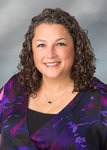Relationships and relevance: Katy ISD Teachers of the Year share perspectives on teaching
Tasha McDonald and Dax Nesossi are Katy ISD’s district-wide Teachers of the Year for 2022-23.
This item is available in full to subscribers.
Attention subscribers
To continue reading, you will need to either log in to your subscriber account, or purchase a new subscription.
If you are a current print subscriber, you can set up a free website account and connect your subscription to it by clicking here.
If you are a digital subscriber with an active, online-only subscription then you already have an account here. Just reset your password if you've not yet logged in to your account on this new site.
Otherwise, click here to view your options for subscribing.
Please log in to continue |
Relationships and relevance: Katy ISD Teachers of the Year share perspectives on teaching
Tasha McDonald and Dax Nesossi are Katy ISD’s district-wide Teachers of the Year for 2022-23.
McDonald is an ESL/ISST (English as a Second Language/Instructional Support Specialty Teacher) at Rylander Elementary. She’s taught there since 2009.
“I work with all of our students that participate in the ESL program, which is English as a second language,” McDonald said. “I work mainly with beginners and intermediate students that are learning English and I help to facilitate that learning to where they are able to communicate and continue to learn the English language.”
Nesossi teaches history at Paetow High, where he is also the academic decathlon coach. This is his third year there. He taught at Tompkins High before moving to Paetow and taught in Cy-Fair ISD before that. He is a US Navy veteran.
Teachers are selected Campus Teacher of the Year at their respective campuses. Campus principals and those teachers submit nomination essays to a districtwide Teacher of the Year selection committee, which uses a blind application review process to make selections. Teachers with the three highest scores are brought in for interviews, and from there the committee makes its final selections.
The district is expected to name its district-wide Teachers of the Year for 2023-24 at the end of March.
On relationships and relevance
Two keys to great teaching, McDonald and Nesossi said, were building relationships with students and making the content relevant to students. To build that good relationship, McDonald said teachers must be student-centered.
“Building that relationship with the student is your very first, I guess not line of defense, but the first thing that you need to do so that student not only trusts you, but you build that respect,” McDonald said. “If you respect your students and you have that relationship with them, they’re going to be willing to do anything and everything they can for you.”
Nesossi said there were slight nuances between the elementary students McDonald teaches and the high school student he teaches, and it was important to understand and work with them.
“I work with 11th graders, and I think particularly what we need to pay attention to is that these are human beings that also have life outside of school,” Nesossi said. “And so, when I look at the tremendous portfolio of some of our students extracurriculars, many of them don’t get home until 7 o’clock at night.”
High school students can be overextended, and Nesossi said he and other teachers try to work with that.
“If they come to me and say they need an extension on a deadline, nothing as large as a research paper—that’s pretty much established, and they know they’re working towards that goal at the end of the semester—but if there’s a small little assignment that they need an extra night on and they said, look, I’m going to the Ag Barn at 5 a.m. and we’ve been at a basketball game up in Brenham until 11 p.m., a good teacher, a great teacher will understand to be flexible with that student to meet them halfway,” Nesossi said.
Nesossi also said it was important to provide, as he put it, “a consistent rationale for what you’re teaching and providing a connectivity to the real world.” As a history teacher, he said this meant he wasn’t going to start listing a litany of dead people with dates and birthdates for memorization. He wants students to understand how history impacts them.
“You try to put into the lap of the students the content so they have a rationale and in turn start to learn intrinsically,” Nesossi said. “They might think, oh, this impacts me. I have a stake in this bit of information or in this content. When they find themselves in that, then they become better students and we have that symbiotic relationship.”
McDonald said teachers who make the content relevant to the students get that student buy-in.
“I love the term buy-in,” Nesossi said. “I use that quite a bit myself. You’ve got to have that and establish that in the first two weeks of school. I have young mentees that I work with, first- and second-year teachers, and I’m like, you don’t get those first two days of school back. And I’m not trying to make you nervous on that first day of school, but that’s where you are selling yourself to the students and they’ve got to have that buy-in.”
McDonald said students speak 28 different languages at Rylander, and the students she works with have little to no English.
“It’s really just letting them know that I’m there for them, that I care about them and that we are really going to work together,” McDonald said. “It’s not me versus them or them just doing the assignment. We are working together so that they can grow in their ability to speak English, to listen, to read and to write and working on those small steps. It is a step at a time.”
Keywords
Katy ISD Teachers of the Year, Paetow High, Rylander Elementary











